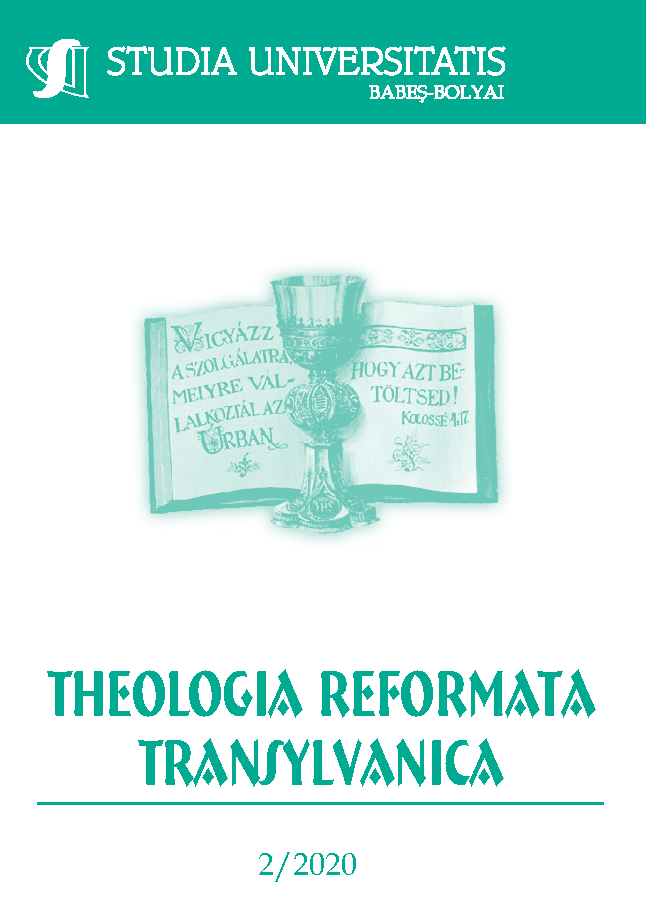A Narrow Breathing Space. The Issue of Prisoners in Bishop János Vásárhelyi’s Correspondence between 1944 and 1945
DOI:
https://doi.org/10.24193/subbtref.65.2.01Keywords:
Bishop, János Vásárhelyi, World War II, Reformed Church District of Transylvania, prisoner, Groza.Abstract
In his study, the author focuses on analysing how the issue of war prisoners and of Reformed civilians dragged away from their homes is presented in the correspondence of Bishop János Vásárhelyi, the leader of the Reformed Church District of Transylvania. He also discusses the steps the bishop could take to obtain the release of the captives. The author lists a number of examples illustrating the measures implemented in September 1944 at first by the Hungarian military authorities leaving northern Transylvania and then by the Romanian and Soviet military authorities marching in and whisking along Hungarian ecclesiastical personalities and also members of the congregation. One can find out from the study the efforts Bishop János Vásárhelyi made to convince the Hungarian authorities to release the members of Romanian Greek Catholic and Orthodox high clergy they had in their custody, and afterwards how he attempted to obtain the release of the Reformed Church’s clergymen, teachers, and professors and also of one of his family members imprisoned by the Romanian authorities in Romanian lagers. Furthermore, the study points out the fact that in that period many Hungarians who were transported to the Soviet Union in large prisoner trains via Kolozsvár/Cluj asked for help too, and the bishop tried to help within the narrow margins and with the few means that he had.References
Archive Sources
Central Archives of the Reformed Church District of Transylvania, Collection F30, János Vásárhelyi’s legacy.
Episcopal Archives under the Central Archives of the Reformed Church District of Transylvania, Collection A21, registered documents.
National Historical Central Archives, Bucharest, Inspectorate of the Romanian Gendarmerie, collection 1474.
Books, Studies, Journals
BOGNÁR, Zalán (2017): 960 ezer vagy több mint 1 millió (hadi) fogoly? Az 1941–1945 között szovjet (hadi) fogságba vetett magyar állampolgárok (katonák és civilek) létszáma és halálozási arányuk. In: Emberek az embertelenségben. A Gulág és a Gupvi. A Gulágkutatók Nemzetközi Társaságának évkönyve, 2015–2017. Budapest, Gulágkutatók Nemzetközi Társasága, Kairosz Kiadó.
NASTASĂ, Lucian – ANDREESCU, Andreea – VARGA, Andrea (eds.) (2002): Minorități etnoculturale, Mărturii documentare, maghiarii din România (1945–1955). Cluj, Centrul de Resurse pentru Diversitate Etnoculturală, Diversitate etnoculturală în România.
RAVASZ, István (1999): Az erdélyi hadműveletek 1944 késő nyarán – kora őszén. In: Hadtörténelmi közlemények 112, 1999/4.
STARK, Tamás (ed., introd. study) (2017): „… akkor aszt mondták kicsi robot”. A magyar polgári lakosság elhurcolása a Szovjetunióba korabeli dokumentumok tükrében. Budapest, MTA Bölcsészettudományi Kutatóközpont, Történettudományi Intézet.
Világosság – daily newspaper, Kolozsvár/Cluj, 1944.
Downloads
Published
How to Cite
Issue
Section
License
Copyright (c) 2020 Studia Universitatis Babeș-Bolyai Theologia Reformata Transylvanica

This work is licensed under a Creative Commons Attribution-NonCommercial-NoDerivatives 4.0 International License.



